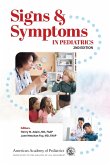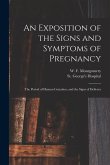The term "premenstrual tension" was first introduced by R. T. Frank in 1931, and later replaced with "premenstrual syndrome" (PMS) by Greene and Dalton in 1953 (Connolly, 2001). PMS is a common and complex condition that affects many females during their reproductive years, with particularly high rates reported among adolescents. It is defined as a cyclic pattern of emotional, physical, and behavioral symptoms that occur during the luteal phase of the menstrual cycle and subside with the onset of menstruation (World Health Organization, 1992). Although its precise cause is still unknown, PMS is widely believed to arise from a combination of hormonal fluctuations, neurotransmitter changes, genetic factors, and environmental influences. Adolescents are especially vulnerable due to the hormonal changes associated with puberty. Reported prevalence rates range from 30% to 80%, with variations influenced by lifestyle, cultural background, and socioeconomic conditions (Arafa et al., 2018; Acharya et al., 2006). Globally, the prevalence of PMS has been reported between 5% and 90%, while rates among adolescents range from 0% to 53%, often affecting their quality of life (Dambhare et al., 2012; Lee et al., 2006). Some studies even report 100% prevalence among young and middle-aged women in western India (Beahmbatt et al., 2013). Lifestyle patterns among adolescents have also been linked to menstrual problems (Nagi et al., 2019). Numerous studies confirm that PMS interferes with daily activities and is a major cause of absenteeism from work or school (Shamnani et al., 2018; Dennerstein et al., 2010; Taghizadeh et al., 2008). PMS includes a wide range of symptoms-more than 150 have been documented-such as abdominal bloating, headaches, breast tenderness, irritability, mood swings, anxiety, and depression, but no single diagnostic test exists (Derman et al., 2004). These symptoms can significantly disrupt daily life, affecting academic performance, social interaction, and overall well-being (Antai et al., 2004; Ghanbari et al., 2008). This disruption is especially concerning for adolescents, who are already undergoing major physical and emotional changes. Research shows that PMS is a leading contributor to school absenteeism, reduced academic productivity, and strained relationships (Asadi et al., 2020).
Bitte wählen Sie Ihr Anliegen aus.
Rechnungen
Retourenschein anfordern
Bestellstatus
Storno








